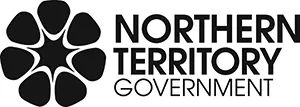Scrub typhus
Scrub typhus is a disease caused by bacteria called Orientia tsutsugamushi, which is in the rickettsia family.
Where it's found
Scrub typhus is found in Asia and the Pacific region including northern Australia.
The endemic area extends from south-eastern Siberia and northern Japan, through eastern and south-east Asia, to Vanuatu in the east and Pakistan in the west.
Other countries may have small foci. Thailand has the highest prevalence of disease.
There have been numerous reported cases of infection in the Top End of the NT since 1990 with at least one fatality.
More than half of the reported cases were infected in Litchfield National Park. Other areas associated with infection include all of the following:
- Batchelor area
- Melville Island
- Groote Eylandt
- Emu Point near Peppimenarti in the Daly River area.
How it spreads
The germ infects people when they are bitten (usually painlessly) by an infected larval mite called Leptotrombidium deliense.
The mite:
- is very small (0.2 to 0.4mm) and can only be seen through a microscope or magnifying glass
- live in grassland areas at the edge of dense monsoon forests or forested creeks.
It usually feeds on marsupials and other native animals such as rats but can attach to passing humans and bite for a blood meal.
Scrub typhus cannot spread from person to person.
Who is at risk
Anyone near well watered escarpment slopes of the Top End that have:
- associated creeks and
- seepage areas with monsoon forest and grasslands in close proximity.
The warning particularly applies for:
- bushwalkers
- off road tourists
- Aboriginal people pursuing traditional lifestyles
- military personnel on bush exercises
- park rangers
- people clearing virgin land in high risk areas.
Symptoms
The symptoms usually occur within 1 to 2 weeks of being bitten.
They may include fever, chills, sweating, headache, cough, swollen glands and sometimes a dull red skin rash.
The bite site often ulcerates and becomes red with a central black scab, called an “eschar”.
Any person with these symptoms who has recently visited a risk area, in particular Litchfield Park, should mention the possibility of scrub typhus to their doctor.
Diagnosis
The diagnosis is made by a blood test.
Treatment
Treatment with antibiotics is necessary and very effective.
Doxycycline is the drug of choice. Often people require treatment in hospital.
Prevention
You should take precautions to avoid being bitten by mites when visiting 'at risk' areas. These include:
- wearing long trousers and footwear such as runners or boots with socks (not barefoot or sandals)
- applying insect repellent that contains DEET or picaridin to all exposed skin areas on:
- the legs
- socks
- the bottom half of trousers
- not sitting or lying on bare ground or grass - use a suitable ground sheet or other ground cover
- camping in cleared areas away from dense forests - use tents with attached floors
- wearing permethrin impregnated clothing.
Information for health professionals
To find out more, go to the NT Health website.
Contact
Contact your nearest Centre for Disease Control on the NT Health website.
